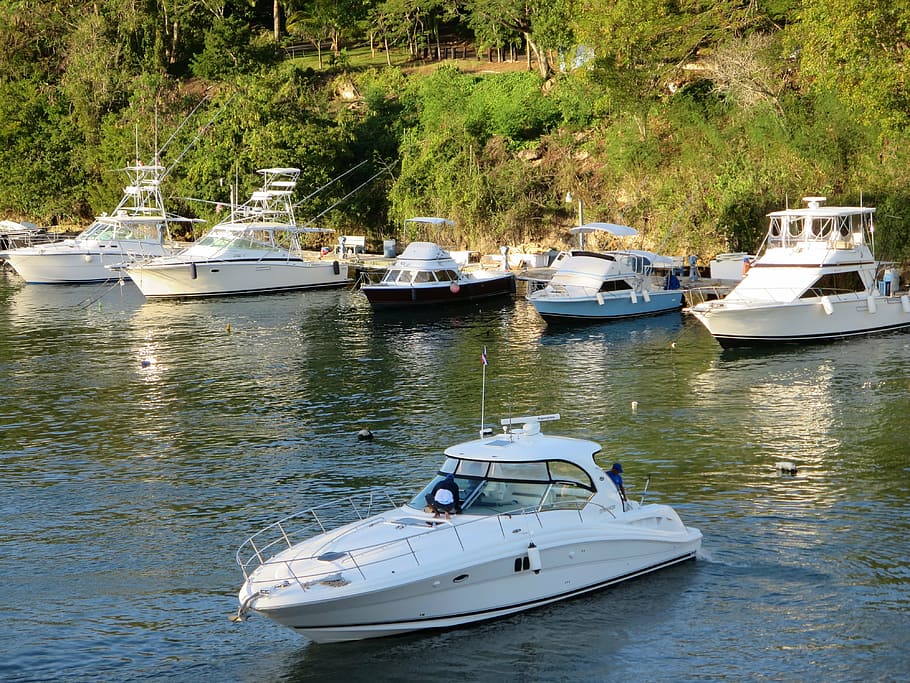キャプティブ 2023.09.19
CA54 バミューダのキャプティブに激震が走る
 For those who prefer to read this column in English, the Japanese text is followed by a British English translation, so please scroll down to the bottom of the Japanese text.
For those who prefer to read this column in English, the Japanese text is followed by a British English translation, so please scroll down to the bottom of the Japanese text.
最高裁が「タックス・ヘイブン対策税制」に関し非常に重要な判断を示した事案が「ガーンジー島事件」である。
日本国内の納税者(個人又は会社)が、国が定める税率より低い外国・地域(タックス・ヘイブン:租税回避地)に会社等を設立した場合、その外国会社の所得を国内の所得と合算して課税するという税制が「タックス・ヘイブン対策税制」である。
日本の納税者が税率の低い国に会社を作り、本来日本で課税されるべき所得をその会社に移転、課税を回避しようとすることへの対応税制であり、典型的な規制対象は海外に設立した「ペーパーカンパニー」である。そのため、「海外に子会社を設立する経済的合理性があると認められる場合」には、このタックス・ヘイブン対策税制の適用はない。
ある日本企業が、英仏海峡に位置する「ガーンジー島」という、「タックス・ヘイブン」の地に子会社を設立して現地で税金を納めていた。ただ、英国王室領であるガーンジー島では、一定の要件を満たした「外国資本法人の所得税」(日本でいう法人税)については、税務当局の承認を条件に、「0%を超え30%以下の割合の中から税率を選択して申請することができる」という制度が採用されていた。
当時の日本では税率が25%以下の外国・地域については「タックス・ヘイブン対策税制」が適用されていたため、25%やそれより少ない税率を選択すると、タックス・ヘイブン対策税制が適用され、子会社の所得にも日本の税率が適用されて課税されることになるため、その日本企業は「26%の税率を選択」して納税をしていた。
しかし、この日本の企業の本社を所轄する税務署は、「この『税金』として払っているものは、日本の法人税法上の『外国法人税』には該当しないので、ガーンジー島子会社にもタックス・ヘイブン対策税制の適用がある」と主張、ガーンジー島子会社の所得も合算してその日本企業への課税処分を行った。
これを不服としてこの日本企業は提訴、東京地裁(第一審)及び東京高裁(控訴審)は原告敗訴で「税務署の判断を支持した」が、最高裁では、弊社グローバル・リンクの顧問であった志賀櫻弁護士の「鑑定意見書(2007年12月28日付)」が決め手となり原告の逆転勝訴となった事案である。
タックス・ヘイブンの泰斗として著名であった志賀櫻弁護士と初めてお目に掛った際、「キャプティブからの再保険をロンドン・マーケットで的確に得るようにして、タックス・ヘイブンではない米国、ハワイにキャプティブを設立するというビジネスモデルは大変賢明であると思います。だから応援させていただきたい。」と顧問就任のお願いを快諾していただいたことを昨日のことのように記憶している。
1.その後の動き
この「タックス・ヘイブン対策税制」は2017(平成29)年度の税制改正において、大幅な見直しが行われた。それまでは、租税負担割合が20%未満か否かによって「特定外国子会社等」に該当するか否かを判定していた。その20%は、「トリガー税率」と言われ重要な意味を持っていた。
しかし、経済実体のないペーパーカンパニー等については、「租税負担割合が20%以上であるという事実だけで制度の適用を免除するのは問題がある」という議論により、この税制改正で、制度適用免除基準としての税率基準(租税負担割合)は残されてはいるが、トリガー税率は廃止された。
また、ペーパーカンパニーや「事実上のキャッシュボックス」という新たな概念が定義され、そのような会社に対しては、合算課税制度が適用されることになった。このように、実際の「租税負担割合が20%以上」であったとしても、ペーパーカンパニー等に該当すると当該企業の全ての所得に対し合算課税が生じることになった。
当然、この結果、より一層「キャプティブの設立地(ドミサイル)の選択」が重要な意味を持つことになったのである。
2.キャプティブをどこにつくるか
キャプティブを設立する理由としては様々なことが挙げられるが、「企業が成長するにしたがい、一般に販売されている保険では、自社の複雑で巨大化するリスクに対応できなくなってきた」というものが一番多い理由であろう。
キャプティブの設立を検討していくと、「キャプティブを使ったリスクコストの方が現在の保険プログラムよりも遙かに低いこと」、また「日本で一般的に得られる保険よりも広範な補償が得られやすいこと」、これらのことが認識されていくのが普通である。その結果、「キャプティブをつくろう」となり、グローバル・リンクのようなキャプティブ・コンサルティング会社との詳細な検討を重ね、最適なキャプティブの設立地(ドミサイル)の選択がおこなわれる。
日本企業によるキャプティブの最初の設立の地は、バミューダと言われている。有名なタックス・ヘイブン(租税回避地)でありキャプティブの数が世界で一番多いドミサイルである。

3.バミューダで起きたこと
2023年8月、そのバミューダに激震が走った。バミューダ政府が、「OECDの多国籍グループに対する最低課税要件に準拠するために策定した15%の法人所得税を中心とする新税制」を公表したのである。
8月8日に公表されたこの法人所得税は、年間収益が7億5,000万ユーロ以上の多国籍企業が所有するバミューダ在の子会社に適用され、2025年1月1日から施行されるというものである。バミューダに存在するキャプティブの大半が対象になることが予想されているが、個々のキャプティブがどの程度影響を受けるかは、当該企業が支払っている税金の額によって大きく異なる。
この新税案の公表時には明確に示されていないが、953(d)選択(米国企業として課税されることを認める)を採用している米国資本のキャプティブについては、これが控除として機能し、追加納税の必要はない可能性が高いと言われている。つまり、最も影響を受ける可能性があるのは、米国以外の多国籍企業が所有するキャプティブということである。
新税制案では、年間売上高が7億5,000万ユーロを超える大規模な多国籍企業が求められる法人所得税は「15%が限度」とされているため、「15%以上の税金を他の国・地域で支払っているキャプティブ」にとっては、申告作業に影響が出るだけで、納税額には影響しない可能性が高い。
OECDの世界的な最低税制基準である「Pillar IIイニシアチブ」に署名した(「せざるを得なかった」?)、タックス・ヘイブンの最著名地であるバミューダへの動きはこれが最初であるが、最後となると考えている人は少ない。「世界から不公平な税制地(タックス・ヘイブン)を無くすことがOECDの目的である」と考えられているからである。
その理由は、下記「国税庁の公式ウェブサイト」にある「BEPSプロジェクト」の「前文」の記述を見ると理解できる。
税源浸食と利益移転(BEPS: Base Erosion and Profit Shifting)への取り組みについて -BEPSプロジェクト-
OECDでは、近年のグローバルなビジネスモデルの構造変化により生じた多国籍企業の活動実態と各国の税制や国際課税ルールとの間のずれを利用することで、多国籍企業がその課税所得を人為的に操作し、課税逃れを行っている問題(BEPS)に対処するため、平成24年よりBEPSプロジェクトを立ち上げました。このBEPSプロジェクトでは、 G20(財務大臣・中央銀行総裁会議)の要請により策定された15項目の「BEPS行動計画」に沿って、国際的に協調してBEPSに有効に対処していくための対応策について議論が行われ、平成27年9月に「最終報告書」がとりまとめられました(同10月にG20財務大臣・中央銀行総裁会議(於:ペルー・リマ)、11月にG20サミット(於:トルコ・アンタルヤ)に報告。)
今回のまとめ
財閥系生命保険会社によって誕生したばかりの損害保険子会社、その企業から経営コンサルティングを委嘱され、同社の役員と一緒に「新商品開発」のため、業務提携先の最初の調査に海外出張に出たのは、今から四半世紀ほど前、1998年の春であった。
世界のリスクマネジメントの専門家、損害保険のプロフェッショナルが年に1回米国で集まる、RIMS(リムズ:リスク及び保険マネジメント協会:Risk & Insurance Management Society)の年次総会に参加、その後ニューヨークで業務提携先候補の企業、法律事務所等との打ち合わせを終えて訪れた地がバミューダであった。
「キャプティブ事業を将来の事業分野の一つにする」ため、業務提携先候補企業との面談がその目的であった。当時、全世界に存在したキャプティブは3,472社であったが、そのうちバミューダには約40%の1,497社が所在していた。まさに「キャプティブのメッカ」と呼ばれる場所であった。
因みに、当時、日本企業の所有するキャプティブは全世界で78社、バミューダ所在は29社であった。現在、全世界の企業が有するキャプティブの数は約7,000社と倍増しているが、日本企業が有するキャプティブの数は90社程度であり、これから見ても、日本に於けるリスクマネジメント、そしてキャプティブの展開がいかに進んでいないかが分る。
前述の志賀先生は、「民間税調」の中心メンバーとして「政府・与党とは異なる立場から国民のための税制を訴え、弱者に配慮した具体的な提言をしてきた(民間税調HPより)」正義感が大変強い方であった。そういった、先生の溢れんばかりの正義感から、「適格と思えないキャプティブ」が乱立しているなか、グローバル・リンクが、川田剛先生のご指導のもと、タックス・ヘイブン(租税回避地)ではない、米国ハワイ州に、適格、適正なキャプティブ、「ソリューション・キャプティブ®」の設立を進める事業に深いご理解とご関心を寄せていただき、ご指導いただいた。
志賀先生にご指導いただいたのは期間としては、僅か2年間だが、その渾身のご指導の質、量は、保存された膨大なデータからも裏付けられるが、何十年ものご指導に匹敵するものである。
最高裁判所へ提出した鑑定意見書(2007 年 12 月 28 日付)17 ページ、「緖説」には、「1.原審判示の誤り」と題して、原審判決(東京高等裁判所)の判決概要が記されているなかに下記一文がある。
(2) キャプティブはそのようなリスクマネジメントのメカニズムの中において、重要なトゥール(道具)として重要視されている。
このご指導を多くの方々と共有して、ソリューション・キャプティブ®の設立を推進することがグローバル・リンクに残された使命であると考えている。
執筆・翻訳者:羽谷 信一郎
English Translation
Captive (CA) 54 – Big oscillations in Bermuda’s captive
The Supreme Court made a very important decision in the Guernsey case concerning the ‘tax haven taxation system’.
The anti-tax haven taxation system allows Japanese taxpayers (individuals or companies) to combine the income of a foreign company with the income of a domestic taxpayer when the company is established in a foreign country or territory where the tax rate is lower than the national tax rate (tax havens).
The taxation system is a response to Japanese taxpayers’ attempts to avoid taxation by establishing companies in countries with low tax rates and transferring income that would otherwise be taxed in Japan to those companies, with the typical target being overseas paper companies. Therefore, the anti-tax haven taxation regime does not apply to cases where there is an economic rationale for establishing a subsidiary abroad.
A Japanese company established a subsidiary in a ‘tax haven’, namely ‘Guernsey Island’ in the English Channel, and paid taxes there. However, on Guernsey, a system was adopted whereby “income tax of foreign capital corporations” (corporate tax in Japan) that met certain requirements could apply for a tax rate selected from a rate of more than 0% and less than 30%, subject to approval by the tax authorities.
In Japan at that time, the ‘anti-tax haven taxation system’ was applied to foreign countries and territories with a tax rate of 25% or less, so if the Japanese company chose a tax rate of 25% or less, the anti-tax haven taxation system would be applied and the subsidiary’s income would be taxed at the Japanese tax rate, so the Japanese company would have to ‘opted for a 26% tax rate’ and paid tax.
However, the tax office with jurisdiction over the Japanese company argued that “what is paid as ‘tax’ does not fall under the category of ‘foreign corporation tax’ under the Japanese Corporation Tax Law, so the anti-Tax Haven taxation regime applies to the Guernsey subsidiary as well” and combined the income of the Guernsey subsidiary with that of the Japanese company and imposed a tax on it. The Japanese company appealed against this and filed a complaint against the Japanese company.
The Tokyo District Court (first instance) and the Tokyo High Court (court of appeal) “upheld the decision of the tax office”, with the plaintiff losing the case, but the Supreme Court reversed and awarded the case to the plaintiff, based on the “written opinion (dated 28 December 2007)” of Sakura Shiga, a lawyer and adviser to Global Link. The case was won by the plaintiff.
When we first met with Mr Sakura Shiga, who was well-known as a leading figure in tax havens, he said, “I think it is a very wise business model to establish a captive in the US and Hawaii, which are not tax havens, in order to accurately obtain reinsurance from the captive in the London market. So I would like to support it.” I remember as if it were only yesterday that he readily agreed to my request to become an adviser.
1.Subsequent developments
The ‘tax haven taxation system’ was substantially revised in the tax reform of 2017 (2017). Until then, it was determined whether or not a company was a ‘specified foreign subsidiary etc.’ according to whether or not its tax burden ratio was less than 20%. This 20% was known as the ‘trigger tax rate’ and had an important meaning.
However, the trigger tax rate was abolished, although the tax rate criteria (tax burden ratio) remained as the exemption criteria for the application of the system, due to the argument that it is problematic to exempt paper companies, etc. without economic substance from the system simply because their tax burden ratio is 20% or more.
In addition, a new concept of paper companies or ‘de facto cashboxes’ was defined and a combined taxation regime was applied to such companies. Thus, even if the actual ‘tax burden ratio’ is 20% or more, if a company falls under the category of paper company, etc., it will be subject to combined taxation on all income of the company concerned.
Naturally, as a result, the ‘choice of domicile of the captive’ has become even more important.
2. Where to establish a captive
There are many reasons for establishing a captive, but the most common reason is probably that “as the company grows, the insurance products on the market are no longer able to cope with the complex and growing risks of the company”.
When considering the establishment of a captive, it is usually recognised that “the cost of risk using a captive is far lower than the current insurance programme” and that “it is easier to obtain broader coverage than is generally available in Japan”. As a result, the decision is made to create a captive, followed by detailed discussions with a captive consulting company such as Global Link, which results in the selection of the most appropriate captive location (domicile).
The first captive to be established by a Japanese company is said to be in Bermuda. Domicile is a well-known tax haven and has the largest number of captives in the world.
3. what happened in Bermuda
In the summer of 2023, Bermuda was rocked by an earthquake. The Bermudian Government announced a ‘new tax regime centred on a 15% corporate income tax designed to comply with the OECD’s minimum taxation requirements for multinational groups’.
The corporate income tax, which was announced on 8 August, will apply to Bermudian-owned subsidiaries of multinational companies with annual revenues of EUR 750 million or more and will come into force on 1 January 2025. It is expected that the majority of captives present in Bermuda will be affected, but the extent to which individual captives will be affected will depend largely on the amount of tax paid by the company in question.
Although not clearly indicated at the time of publication of this new tax proposal, it is said that for US capital captives that have adopted the 953(d) election (allowing them to be taxed as a US company), this will act as a deduction and it is likely that no additional tax will be payable. This means that the captives most likely to be affected are those owned by non-US multinationals.
As the new tax proposal states that the corporate income tax required for large multinationals with annual turnover of more than EUR 750 million is “limited to 15%”, it is likely that for “captives that pay more than 15% of their tax in other jurisdictions”, this will only affect the tax filing process, but not the amount of tax paid. Highly likely.
The OECD has signed up to (‘had to’?) the Pillar II initiative, the OECD’s global minimum tax standard. ‘The first move towards Bermuda, the most prominent of the tax havens, but few believe it will be the last’. This is because the OECD’s aim is to ‘rid the world of unfair tax havens’.
The reasons for this can be understood from the description in the preamble of the BEPS project on the ‘official website of the National Tax Administration’ below.
Tackling Base Erosion and Profit Shifting (BEPS: Base Erosion and Profit Shifting) – BEPS Project -.
In order to address the problem of multinational corporations artificially manipulating their taxable income and evading taxation (BEPS) by exploiting the gap between the actual activities of multinational corporations and national tax systems and international taxation rules that has arisen as a result of recent structural changes in global business models, the OECD has, since 2012 BEPS project was launched. The BEPS project discussed measures to effectively address BEPS in an internationally co-ordinated manner in line with the 15-point ‘BEPS Action Plan’ formulated at the request of the G20 (G20 Finance Ministers and Central Bank Governors’ Meeting), and the ‘Final Report’ was compiled in September 2015. The report was presented to the G20 Finance Ministers and Central Bank Governors’ Meeting (in Lima, Peru) in October 2015 and the G20 Summit (in Antalya, Turkey) in November 2015).
Summary of this issue.
It was in the spring of 1998, almost a quarter of a century ago, that I was commissioned to provide management consulting services for a non-life insurance subsidiary recently established by a conglomerate life insurance company, and went on an overseas business trip with the company’s executives to investigate business partners for “new product development”.
I attended the annual meeting of the Risk & Insurance Management Society (RIMS), a group of risk management experts and non-life insurance professionals from around the world who meet once a year in the US, and then went to New York to meet with potential business partners and law firms, After meeting with potential business partners, law firms and others in New York, I visited Bermuda.
The purpose of the visit was to meet with potential business partners in order to “make Captive business one of our future business areas”. At the time, there were 3,472 captives worldwide, of which 1,497, or 40%, were located in Bermuda. It was truly a “Mecca for captives”.
At that time, 78 captives were owned by Japanese companies worldwide, 29 of which were located in Bermuda. Today, the number of captives owned by companies worldwide has doubled to approximately 7,000, while the number of captives owned by Japanese companies is around 90, a figure that shows how little progress has been made in risk management and the development of captives in Japan.
The aforementioned Dr Shiga was a core member of the Private Sector Tax Commission, who “appealed for a tax system for the people from a position different from that of the government and ruling party, and made concrete proposals with consideration for the vulnerable (from the Private Sector Tax Commission website)” and had a very strong sense of justice. His overflowing sense of justice led to the establishment of the Solution Captive®, a qualified and appropriate captive in the State of Hawaii, USA, which is not a tax haven, under the guidance of Dr Tsuyoshi Kawada, Global Link’s CEO. He showed deep understanding and interest in the project to establish a “Solution Captive®” in the State of Hawaii, USA, which is not a tax haven, and gave us guidance.
Although the guidance given by Dr Shiga lasted only two years, the quality and quantity of his full-hearted guidance, as evidenced by the vast amount of data preserved, is on a par with decades of guidance.
In the opinion submitted to the Supreme Court (dated 28 December 2007), page 17, under the heading “緖説”, there is the following sentence in the summary of the judgment of the original trial (Tokyo High Court) under the title “1. Error in the judgment of the original trial”.
(2) Captives are regarded as an important tool in such risk management mechanisms.
I believe that it is Global Link’s remaining mission to share this guidance with many people and promote the establishment of Solution Captives®.
Author/translator: Shinichiro Hatani


